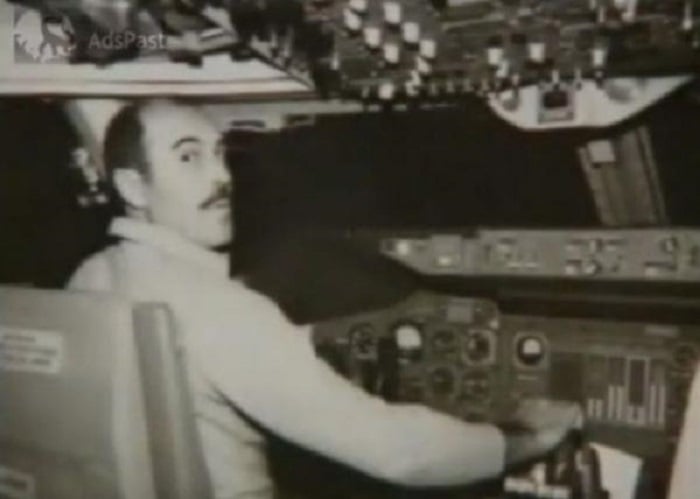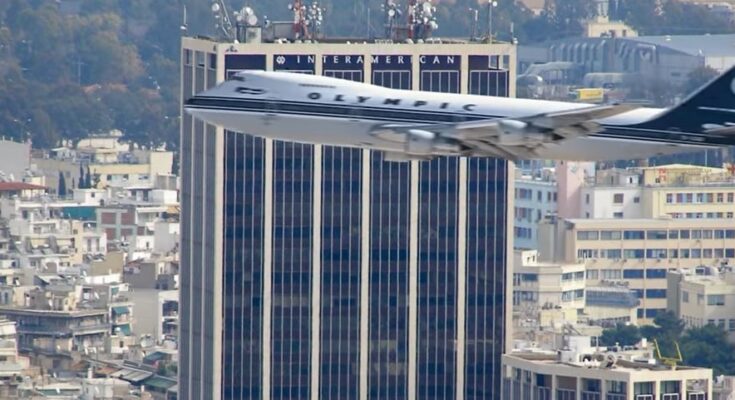The dramatic near-crash of an Olympic Airways Boeing 747 over Athens in 1978 remains a testament to exceptional piloting under extreme pressure. With recent advances in aviation safety, reflecting on this event underscores the importance of training and split-second decision-making in avoiding disaster, making this story just as compelling today.
It was August 9, 1978, when an Olympic Airways plane almost crashed into central Athens, with the pilot managing to avoid the disaster in only the last seconds of the flight.
It was a hot August day at Ellinikon International Airport when four hundred passengers boarded the Olympic Airways flight 411 to New York, most of them U.S. citizens returning from their summer vacation in Greece. There were eighteen crew members on that long-distance trans-Atlantic flight.
The pilot, Sifis Migadis, who was in charge of piloting the 370-ton jumbo jet had thirty-two years of flying experience. Accompanying him was co-pilot Constantinos Fikardos, also a seasoned pilot with whom he flew frequently.
What transpired in just the span of ninety-three seconds on that day will be forever engraved in the minds of the 418 people aboard the Olympic Airways Boeing 747.

Take-off and engine failure for the Olympic Airways plane
At 2:00 pm on that day, the crew took their seats, and the plane entered the runway for takeoff. The aircraft was carrying 160 tons of fuel, as it would fly directly from Athens to New York.
During takeoff, the aircraft could not get high enough. Before the wheels could come off the ground, an explosion was heard from the right engine, which had been damaged.
Migadis could not stop the plane and ordered Fikardos to pick up the wheels to continue takeoff.
Meanwhile, the flight engineer, as soon as he saw the damage in the engine, cut off the water by turning off the water injection system in all the engines. With this, the plane lost 4,500 pounds of thrust.
The pilot was struggling to get the Boeing 747 high enough up and people from ground control thought that the plane would crash into the city of Athens.
With a minimum height of altitude, the pilot managed to pass over the first obstacle, which was a hill in the neighborhood of Alimos. The hill was 200 meters (656 feet) high.
Migadis flew at an altitude of only 209 meters (685 feet) before the plane started losing altitude again. At the same time, Fikardos was sending desperate emergency signals to the control tower.
Alarms at the airport rang out while the huge jumbo jet flew over the apartment buildings of Kallithea and Nea Smyrni, almost scratching the top of the Interamerican building on Syggrou Avenue.
According to a flight attendant, from the windows, they could look out and see the employees working in the offices looking back at the plane, completely flabbergasted.
At that moment, the aircraft was flying at a speed of just 160 miles an hour at an incredible 55 meters (180 feet) above ground.
The pilot decides to crash on a hill
Migadis chose to keep the aircraft stable in a horizontal position, as he knew the law of aerodynamics very well. As he had said in an interview, he broke many aviation rules in order to keep his plane in the air.
He decided not to turn it around and try to maneuver his way out of the situation. He kept the jet going straight forward, as he had decided to try to get to Mount Egaleo, to crash the plane in an uninhabited area.
During those dramatic ninety-three seconds, the two men in the cockpit were silent. At the same time, the engineer was desperately trying to repair the engines any way he could, while the pilots remained focused, calm, and collected.
This was the reason why most passengers did not understand what was going on and had the impression that the low flight over Athens was scheduled. In fact, some of the passengers were taking pictures from the windows as they passed just above the rooftops.
At 2:05 pm, a light breeze helped the Boeing 747 go a few feet higher, which in combination with the reduction of water helped the aircraft to turn slightly before the plane crashed into Athens’ Mount Egaleo.
Olympic Airways plane lands at Ellinikon
Right before the plane would have crashed into Mount Egaleo, Migadis made a last-second decision and completed some last-ditch maneuvers, managing to turn the aircraft around and fly back to Ellinikon.
People at the control tower did not know what was going on because there was no communication from the cockpit. When they saw the Boeing 747 coming back from Piraeus, they could not believe their eyes.
Migadis flew over the sea near Piraeus and emptied some of the fuel, making the aircraft lighter, enabling him to take the jumbo jet safely back to Ellinikon to land it.
The return of the aircraft was met with delirious applause on the ground. When Migadis exited the plane, he saw his two daughters waiting for him.
The two women had been notified by a cousin, who had seen the plane flying a few meters above the Panionios soccer grounds and told them that it almost hit the light pylons and would have crashed.
Migadis’ composure, skills, and experience undoubtedly saved thousands of lives. Had the plane crashed in a populated area, the outcome would have been dire. The aircraft flew at low altitudes that seem impossible. Even engineers from Boeing said that it was not possible for that particular aircraft to stay in the air at such low speeds.
After the near-tragedy, Migadis, like the hero he was, took his seat in the cockpit of a replacement aircraft, and at 6:00 pm, with the rest of the crew, flew the four hundred passengers over the Atlantic to New York City.
As Migadis stated in a 1994 interview, “Those of us who survived that day are stowaways in life.”
Advances in Aviation Safety Since 1978
The harrowing near-crash of the Olympic Airways Boeing 747 in 1978 serves as a critical case study in the evolution of aviation safety standards. Since then, the industry has witnessed significant advancements in technology, training, and regulations designed to prevent such close calls.
- Improved Cockpit Technology: The advent of more sophisticated cockpit automation, including better autopilot systems and advanced warning systems, has significantly reduced the chances of pilot error, which was a contributing factor in many accidents during the 1970s.
- Enhanced Pilot Training: Today’s pilots undergo rigorous training that includes simulated scenarios akin to the 1978 near-crash, ensuring they are better prepared to handle unexpected emergencies. This includes Crew Resource Management (CRM) training, which focuses on effective teamwork and communication in high-pressure situations.
- Regulatory Changes: In response to incidents like the Olympic Airways near-crash, international aviation bodies such as the International Civil Aviation Organization (ICAO) have implemented stricter regulations, particularly concerning flight deck operations and air traffic control coordination.



